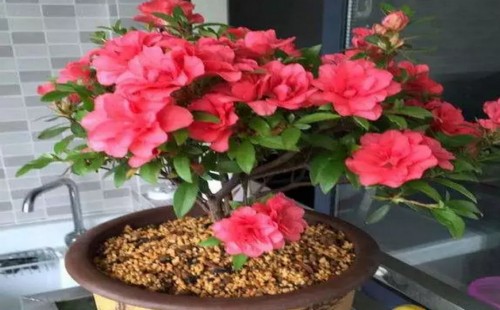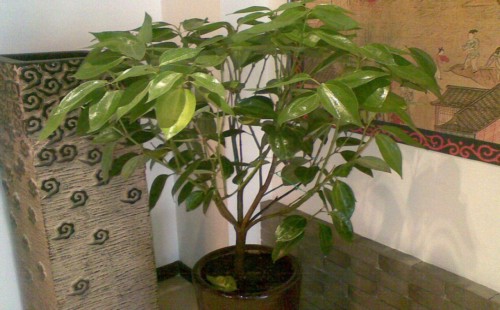How do summer cuckoo bonsai survive the winter
The ornamental effect of summer cuckoo bonsai is often directly related to whether the growth environment is suitable and whether the means of conservation and management are scientific and reasonable. Because summer cuckoo is a variety of rhododendron, it retains or inherits many habits and characteristics of rhododendron, so there are only slight differences in conservation and management. The biggest difficulty for summer cuckoos is to spend summer and overwintering. In the previous article, the editor shared with you the article on how cuckoo bonsai can safely spend the summer. Today, the editor will discuss with you how cuckoo bonsai can survive the winter.

The most suitable growth temperature for summer cuckoos is between 20 °C and 28 ℃, but summer cuckoos are much more hardy in winter than many flowers and plants. Even so, we also need to control the temperature of summer cuckoos under winter conservation conditions to ensure that they can survive the winter smoothly. Summer cuckoo is more suitable for the warm and humid growth environment in southern China, even in winter, the outdoor temperature will not be too low, coupled with its cold tolerance, so it is easier to survive the winter.
However, in order to ensure that the cuckoo bonsai will not be frostbitten and affect its normal growth activities, it is generally required that the winter temperature should not be lower than 5 °C, so as to ensure its smooth winter. If it is in the northern region in winter, it is often much more difficult to maintain. After all, the winter temperature in the northern region is often very low, and the outdoor temperature is generally below 5 °C, even with a low temperature of tens of degrees below zero. The summer cuckoo can not survive the winter smoothly in such an environment, so it is generally necessary to move it to indoor maintenance in time before winter comes in the northern region.
Then, even if the summer cuckoo bonsai is moved into the indoor maintenance in the northern area, several aspects of management need to be paid attention to to ensure that it can survive the winter smoothly. The first is temperature control, which generally requires that the temperature be kept above 5 °C, but at the same time, the temperature should not be too high. Because the temperature is too high will break its dormancy, let it appear the phenomenon of overgrowth, if allowed to grow, it will inevitably affect the next year's flowering, or even the phenomenon of non-flowering. Therefore, the temperature should be controlled within a reasonable range so that it can survive the winter smoothly without breaking its dormancy period.
At the same time, put the summer cuckoo bonsai in indoor maintenance, as there is generally heating in the northern area, the original must choose a good location, in addition to avoid the indoor temperature is too high, but also need to avoid placing the bonsai in the position facing the warm air outlet, otherwise the plant is easy to wilt, wilt and so on. At the same time, because the air in the north is relatively dry, we need to spray water frequently to protect moisture, so as to avoid the phenomenon that the environment is too dry and affect the growth state of summer cuckoos.
And in addition to the low temperature in winter in the north, the low temperature weather lasts for a long time. If you put it indoors for a long time, it is bound to lack of light. Therefore, once there is a sunny day, bonsai should be placed in the sunny place near the windowsill to fully receive light, so as to carry out normal photosynthesis. If the outside temperature is suitable at noon, the summer cuckoo can be moved outdoors at the time of the day when the temperature is the hottest so that it can fully receive light. When the temperature drops, it will be moved back to indoor maintenance in time.
The overwintering problem of summer cuckoo bonsai has always been a concern of many bonsai friends. However, as long as we can grasp a few of the key points, there is generally not much difficulty in successfully overwintering, mainly to do a good job in keeping warm and keeping cold, spraying water to protect moisture, proper lighting and other measures. As long as you can do a good job in the details of these aspects, I believe that summer cuckoo bonsai can survive the cold winter smoothly.
Time: 2019-05-29 Click:
- Prev

Will the potted happiness tree lose its leaves in autumn?
In everyone's eyes, it is natural to think that the potted happiness tree is an evergreen tree because it is often seen to keep its branches and leaves evergreen all the year round. In fact, as long as we do a good job in the conservation and management of potted happiness trees, we can indeed keep them evergreen. However, the happiness tree is a deciduous tree.
- Next

Maintenance and management of balcony bonsai in summer
Many potted friends like to grow some bonsai green plants on their own balcony, on the one hand, they can decorate the space, on the other hand, they can also appreciate them, and at the same time, they can bring us a touch of green and cool feeling in summer. However, because the summer weather is hot and the temperature is high, bonsai plants can become unbearable.
Related
- Fuxing push coffee new agricultural production and marketing class: lack of small-scale processing plants
- Jujube rice field leisure farm deep ploughing Yilan for five years to create a space for organic food and play
- Nongyu Farm-A trial of organic papaya for brave women with advanced technology
- Four points for attention in the prevention and control of diseases and insect pests of edible fungi
- How to add nutrient solution to Edible Fungi
- Is there any good way to control edible fungus mites?
- Open Inoculation Technology of Edible Fungi
- Is there any clever way to use fertilizer for edible fungus in winter?
- What agents are used to kill the pathogens of edible fungi in the mushroom shed?
- Rapid drying of Edible Fungi

